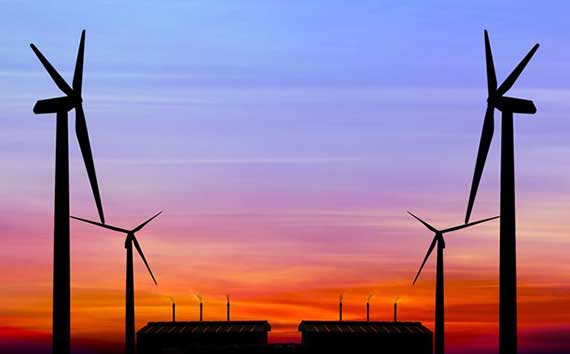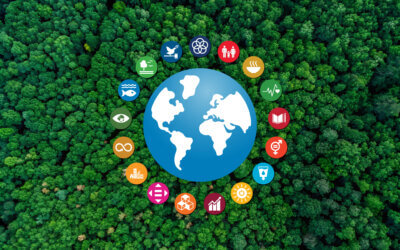Whether it’s a business emitting greenhouse gases (GHGs) as a part of its operations or an individual using carbon-emitting energy to power a vehicle or a home, it’s hard to avoid activities that contribute to increasing carbon dioxide concentrations in our atmosphere. Fortunately, the voluntary carbon market (VCM) offers you a way to offset your business carbon footprint or your own emissions to fight global warming.
The voluntary carbon market might seem confusing at first, but once you understand how it works, you’ll see that it is an excellent tool for combating climate change. How does purchasing carbon credits reduce your carbon footprint? How do I know that they help the environment? Today, we seek to answer questions like these so you can participate in carbon offsetting with confidence and know that you are making a real difference for the world.
First, we’ll examine how the voluntary market is composed, covering how carbon credits are created, verified, and purchased. Then, we’ll explore how offsetting can combat climate change and how it compares to government regulations. Finally, we’ll go over some of the reasons you should participate in the voluntary carbon market.
What Is the Voluntary Carbon Market?
The amount of carbon in the atmosphere is much higher today than at pre-industrial levels, measuring 50% higher than before the industrial revolution. The increases in carbon dioxide and greenhouse gas emissions over the years can be attributed to large-scale industrial practices worldwide. However, businesses of all sizes, households, and individuals’ activities all contribute to carbon dioxide emissions. Fortunately, the voluntary carbon market provides anyone the opportunity to reduce the effect of emissions on the environment.
The voluntary market involves the creation of carbon offset credits that represent the prevention or sequestration of one metric ton of carbon from the atmosphere. Project managers create these offset credits that are eventually sold to individuals and businesses who wish to purchase them to offset emissions. Let’s take a closer look at the various aspects of the voluntary carbon market so you understand how it works and how it provides a legitimate option for atmospheric carbon reductions.
How Are Carbon Credits Created?
The first step in the voluntary carbon market flow is the creation of carbon credits themselves. As stated above, these credits represent one metric ton of carbon dioxide that has either been prevented from entering the atmosphere or removed directly from the atmosphere. Project developers use various methodologies to capture or prevent CO2.
Carbon Dioxide Prevention
The first way carbon credits are created is by preventing greenhouse gases from entering the atmosphere in the first place. These projects involve preventing excess gas that’s released due to industrial practices — like capturing gases created through farming or at landfills before it enters the atmosphere. Other carbon prevention projects include clean and renewable energy developments, like wind, solar, and hydropower, that reduce dependence on burning fossil fuels for energy.
Carbon Dioxide Sequestration
The other way carbon offset credits are generated is when carbon is removed directly from the atmosphere in a process called carbon sequestration. Forests naturally absorb carbon from the atmosphere, so protecting them through forestry projects is a great way to reduce atmospheric concentrations. Another method is using devices that capture and store carbon dioxide directly from the air, like the carbon capture device developed by MIT engineers.
How Are Carbon Credits Verified?
Now that you know how carbon credits are created, let’s look at how they are verified. A good verification process is essential for the voluntary carbon market because it ensures that carbon offsets are not double-counted and that each offset credit purchased represents an actual reduction in atmospheric carbon.
For a carbon credit to be verified, it must meet specific standards set by various organizations. These organizations include the Gold Standard, Verified Carbon Standard (VCS), the Climate Action Reserve, CSA Group, and the American Carbon Registry.
Carbon credit standard organizations check that project offsets are:
- Real: The offset projects actually exist and operate.
- Additional: The offsets are an improvement on CO2 reductions and would not have happened under business-as-usual operations.
- Permanent: The carbon reductions are lasting.
- Quantifiable: The offsets can be accurately accounted for.
- No double counts: Each offset is only counted and sold once to ensure a real reduction in CO2 levels.
- Independently verified: An outside organization verifies the carbon-offsetting projects.
How Do You Buy Carbon Credits?
Now you know how to look for legitimate carbon offset credits, but how do you buy them? You can easily purchase carbon offsets from companies like Terrapass. With carbon offset options available for individuals and families, plus businesses of all sizes, there is a carbon-offsetting opportunity for anyone who wishes to purchase them.
Let’s say you and your family are taking a flight somewhere and want to offset the carbon that is released as a result of your flight. You can purchase flight carbon offsets for each family member based on the flight mileage traveled. This way, you can utilize air travel while offsetting your impact on the environment.
Other options include:
If you are a business owner, you can start by calculating your business’s carbon footprint and then choose offsetting options for small businesses or medium to large companies.
How Does the Voluntary Carbon Market Fight Climate Change?
The primary purpose of the voluntary carbon market is to provide everyone with the opportunity to reduce carbon concentrations in the atmosphere. The design of the voluntary market makes it so that money from the private sector can flow directly into projects designed to slow climate change.
What’s more, Article 6 of the Paris Agreement allows for voluntary market involvement to count toward countries’ agreed-upon emission reductions. This creates an environment in which public and private sector finance can work toward the common goal of generating new green projects around the world.
Article 6 allows for international cooperation on emissions trading. Suppose one country exceeds its agreed-upon reduction of emissions. In that case, they can sell the surplus emission reductions in the form of carbon credits to nations who wish to meet their own emission reductions by purchasing carbon offsets. The countries that sell carbon offsets are financially rewarded for their carbon reductions, while the nations that buy them have a more affordable means to meet their reduction goals.
Article 6 also allows larger nations, or private companies, to invest in clean projects in developing countries. Both the investor and the nation where the project is located can benefit from reduced emissions. For example, a private company can choose to invest in a green energy project in a developing nation to offset the company’s carbon footprint, and the developing nation will benefit from the clean energy and can count the emission reductions toward its carbon reduction goal.
The presence of the voluntary market, along with Article 6 of the Paris Agreement, creates a system in which the private sector and governments around the world can strive toward bettering the environment.
Does the Voluntary Carbon Market Have Advantages Over Government Policy Changes?
Voluntary carbon markets are often criticized for greenwashing, or creating an opportunity for companies to sell carbon credits for reductions they would have made anyhow. This would mean these credits don’t count as “additional” per the standards discussed above. While some are concerned about the effectiveness of voluntary markets, these markets can be just as effective as compliance markets.
One of the primary critiques that voluntary carbon markets face is whether or not the carbon credits count for a real difference in carbon reductions. However, carbon credits backed by standards like the Gold Standard, Verified Carbon Standard, and other criteria are approved and guaranteed to represent a real benefit for emission reductions.
What’s more, the politically driven nature of climate discussions often results in slow decision-making, hindering the rate at which positive climate action occurs. As long as it remains verified by third parties, the voluntary market provides nations, businesses, and individuals with more options for participating in reducing emissions without having to wait for decisions made by policymakers.
Recently, an organization called The Taskforce on Scaling Voluntary Carbon Markets (TSVCM) was created by Mark Carney, U.N. Special Envoy for Climate Action and Finance. The task force is led by the private sector and aims to further improve the voluntary market so it can adequately meet the demands of the Paris Agreement. With organizations like these, the voluntary market can continue to improve and play a significant role in reducing GHG emissions.
Why Should You Participate in the Voluntary Carbon Market?
The primary reason for your participation in the voluntary carbon market is so that you can contribute to an overall reduction in carbon emissions. With increasing greenhouse gas levels, we should consider reducing our carbon footprint as a social responsibility because climate change affects everyone around the world, along with future generations.
Carbon offsetting is the most immediate solution toward achieving a net-zero future. As more individuals and businesses choose to invest in carbon offsetting, we will see carbon mitigation projects receive more funding so they can continue operating and so that new technologies can arise moving into the future.
The money you spend on offsets goes toward carbon projects and improves environmental sustainability. It preserves biodiversity, prevents deforestation, and aids in the transition to clean energy. As we improve these critical aspects of our planet, the world can see improvements on significant issues like food and water scarcity, health consequences, and threats from natural disasters.
The carbon market is easy to participate in, and with verifiable offsets, you can be sure that your money is going toward sustainable projects that make a real difference. Terrapass honors all five standards mentioned above, so you can be sure that your carbon offsets are legitimate and go to a good cause.
Are Voluntary Carbon Markets the Future?
Voluntary carbon markets allow anyone to involve themselves in the fight against climate change. As long as carbon offsets are verified, this tool provides one of the best solutions we have. It allows the private and public sectors to pool money toward a common good. This gives the world an opportunity to select from an array of project options that support emissions reductions.
Start participating in the voluntary carbon market today with Terrapass carbon offset products.
Brought to you by terrapass.com
Featured image:











